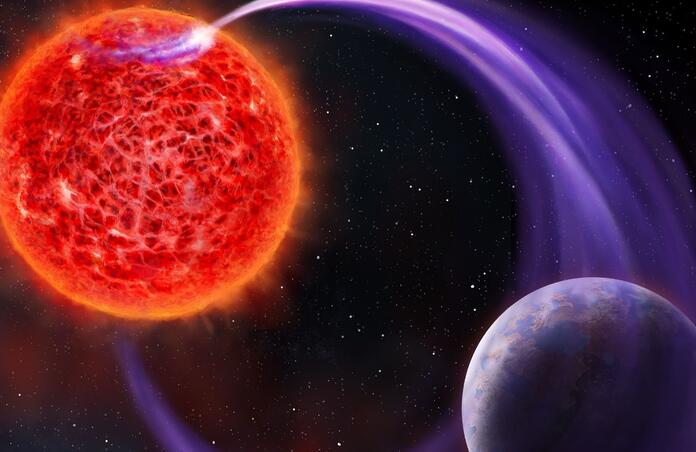Astronomers use Radio Waves to Discover New Exoplanet

Exoplanets are notoriously difficult to discover and confirm—often hidden from regular telescope detection by the brightness of the stars they orbit. Since the first exoplanets were found in 1992, astronomers have employed unique ways to detect these elusive planets, from measuring radial velocity to tracking planetary and star transits. A team of astronomers from the Institute for Radio Astronomy (ASTRON) in the Netherlands have now found a new way to detect them—using radio waves.
The First Exoplanet Discovered with Radio Waves
Using the Low Frequency Array (LOFAR) radio telescope, the astronomers were able to identify an exoplanet 26 light-years away orbiting a dwarf star, called GJ 1151. The team detected the planet by studying distinct radio wave emissions created by an interaction between the star’s magnetic field and a nearby orbiting planet. Though this method has been considered for some time, this is the very first discovery of an exoplanet using radio waves. Their findings were published in Nature Astronomy and The Astrophysical Journal Letters.
How the Method Works
The Sun in our solar system doesn’t interact with the planets the same way that GJ 1151 does, mainly because the Sun produces a smaller magnetic field and the planets here are much farther away. Dwarf stars, though they are much dimmer and smaller compared to the Sun, have a far more powerful magnetic field. Combined with the fact that planets in a dwarf star system must be much closer to the star to sustain a habitable environment, the magnetic field interactions provide very powerful radio wave emissions.

The method was inspired by how Jupiter interacts with its moon, Io. The magnetic field interaction between Io and Jupiter produces an electromagnetic wave that’s in a state of polarization, known as circular polarization. Electromagnetic waves in this state provide a very distinct signature, meaning, if astronomers find these signatures, it’s very likely there’s an exoplanet in the system (binary stars do interact in a similar manner, though). After studying data collected from the LOFAR telescope, the team identified GJ 1151 giving off these particularly strong radio emissions, which lead to their discovery of a new exoplanet.
A Boost in Exoplanet Discovery?
Astronomers have already discovered over 4,000 exoplanets, but with this new method added to the repertoire, researchers are confident the search is sure to receive a nice boost. As Joseph Callingham, a co-author of the published paper, points out, "We now know that nearly every red dwarf hosts terrestrial planets, so there must be other stars showing similar emission." According to Harish Vedantham, another co-author on the paper, this new method will also help "determine what impact the star's magnetic activity has on an exoplanet's habitability." Studying radio wave emissions of distant star systems will undoubtedly yield fascinating new research and discoveries!